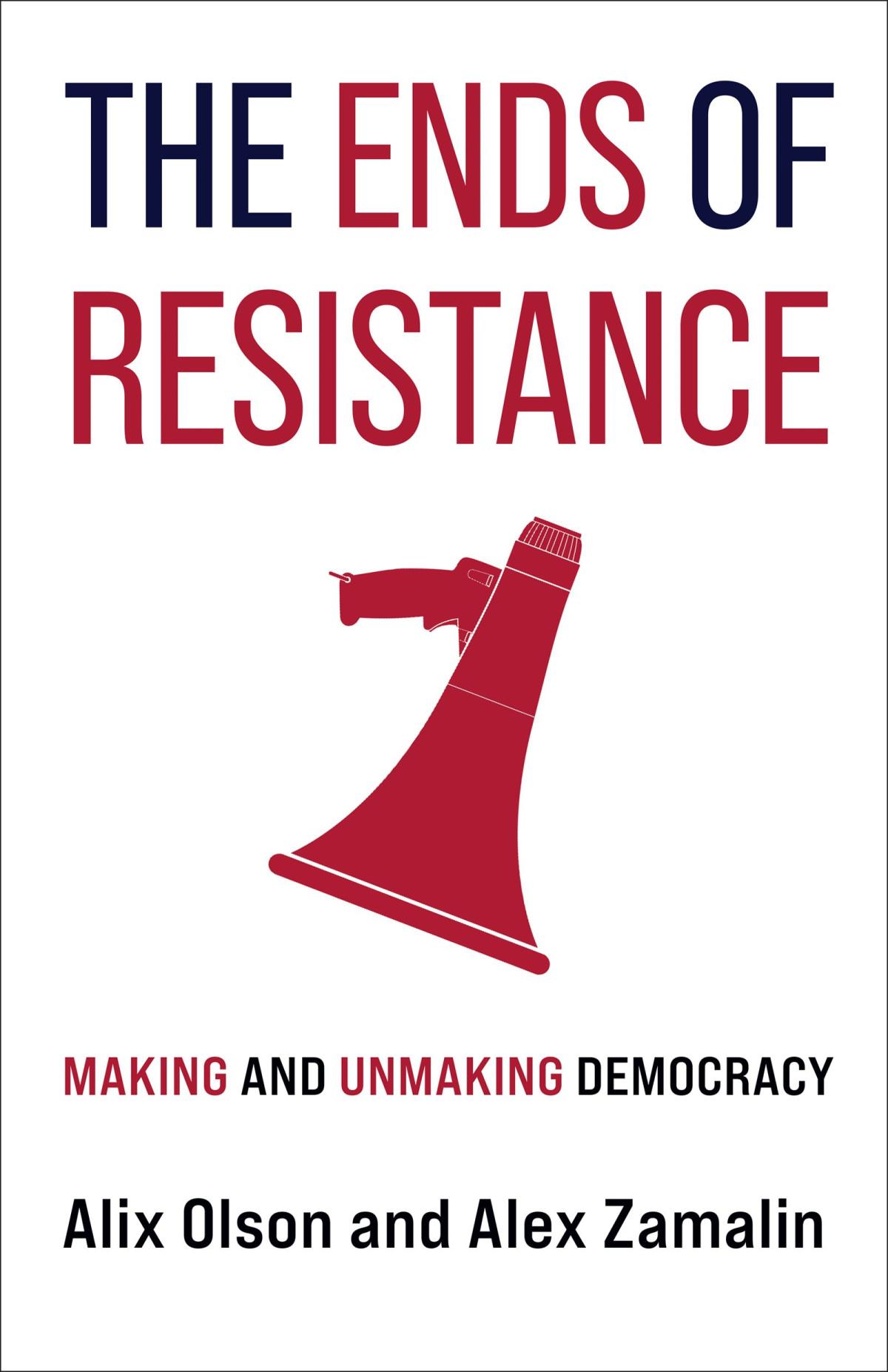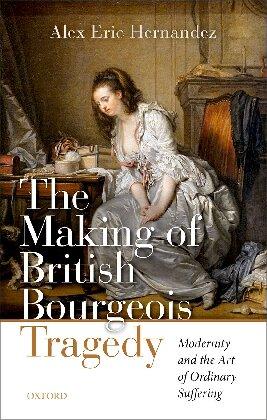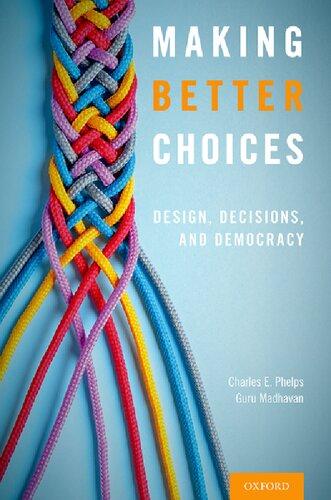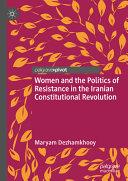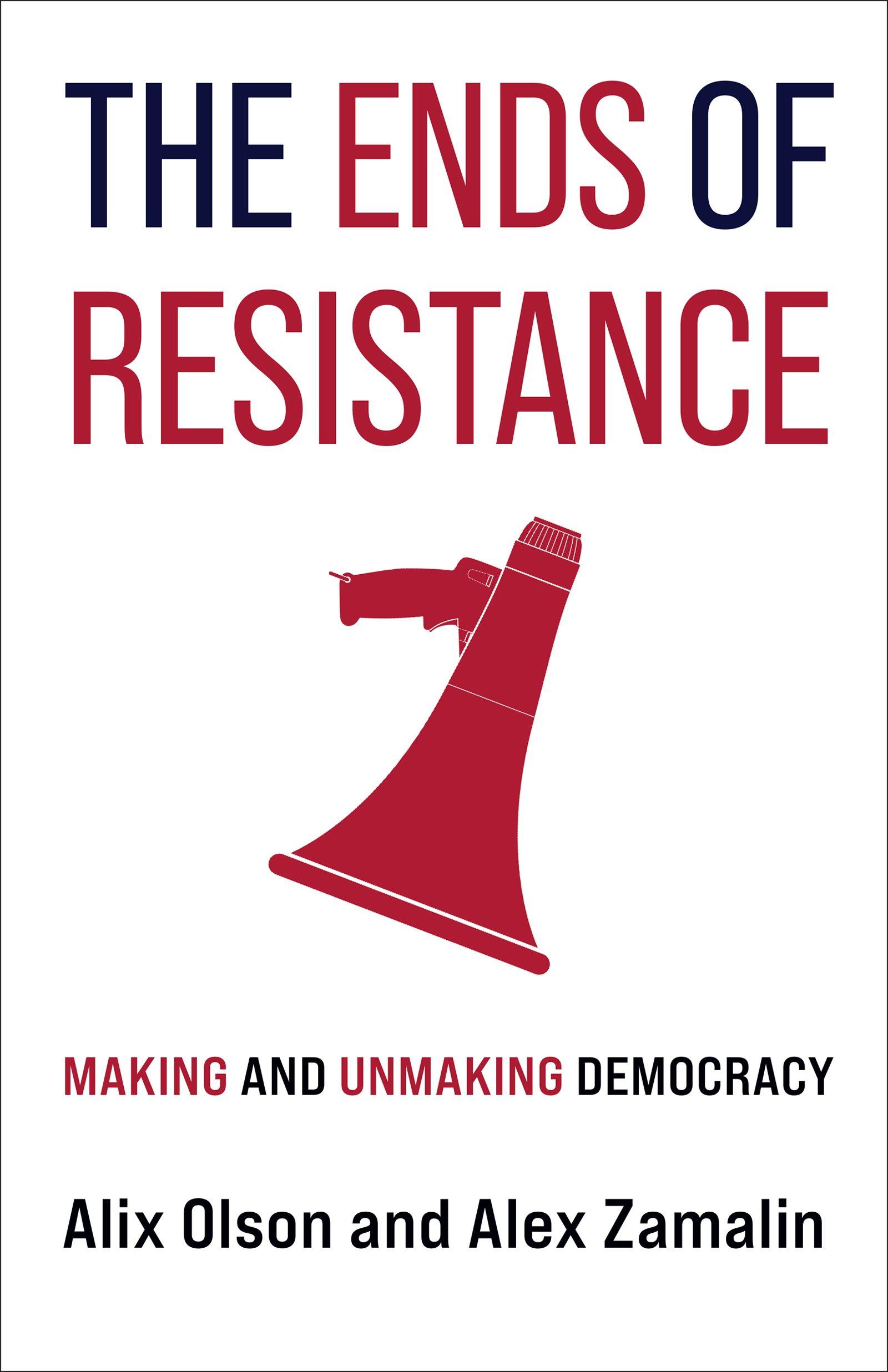CONTENTS
Acknowledgments
1 The End of Resistance: Reformation Over Transformation
2 Neoliberal Resistance: Privatizing Rebellion
3 Democracy Domesticated: Resistance as Restoration
4 Making Suspicious Citizens: Racializing and Criminalizing Resistance
5 Unruly World Building: Toward a Critical Infrastructure of Demanding Hope Notes Index
ACKNOWLEDGMENTS
So many forms of radical kinship have made this book possible.
We would like to express our profound gratitude for encouragement and care offered by Alison Powell, Barra Cohen, Pamela Means, Sarah Kowal, Lyndell Montgomery, David Vine, Heather and Henry Frechette, Brian and Kip Hardy, Jaime Masick, Tristin Chipman, Emily Saliers, Laura Olson, Gary Olson, Kathleen Kelly, Liz Devlin, Barbara Cruikshank, Angie Willey, Angelica Bernal, Kevin Henderson, Sarah Tanzi, Stu Marvel, Susan Ashmore, and Ken Carter.
Thank you to all of the dedicated faculty and staff, and the fierce students at Oxford College, Emory University, and Rutgers University who make teaching politics and feminism such hopeful work.
Deep appreciation goes to our editor Wendy K. Lochner, who believed in our book from the beginning
Special love to our children, Sam and Anita Zamalin, and Zinn and Gray Olson-Masick, for bringing your questions and laughter to our lives.
And continued solidarity with all of those working in resistance toward a better world.
Chapter One
THE END OF RESISTANCE
REFORMATION OVER TRANSFORMATION
Many U.S. progressives were heartened when, shortly after Donald Trump’s election in 2016, a new hashtag developed on Twitter: #resist. This simple injunction was printed on black bumper stickers in white block lettering, signaling a direct confrontation with power. Soon the slogan appeared on suburban yard signs on trimmed green lawns across America, often propped next to those proclaiming “Hate Has No Home Here” (below a heart in the colors of the American flag) or “Not My President” (and in smaller letters “Love. Trumps. Hate”). If these lawn signs stressed the power of love as resistance, others embraced liberal inclusion, diversity, and multiculturalism, declaring in English—but also in Spanish and Arabic—“No Matter Where You’re From, We’re Glad You Are Our Neighbor.”
These public displays of resistance against Trump were just the tip of the iceberg. The 2017 Women’s March on Washington, the day after Trump’s inauguration, was prompted by feminist umbrage at Trump’s egregious behavior toward women, as encapsulated by his infamous brag that “when you’re a star, they let you do it You can do anything. Grab ’em by the pussy.” For many of the five hundred thousand people who attended the D.C. Women’s March, satellite marches across major U.S. cities and eighty-four countries around the world (five million people in total), a profound sense of dread
filled the air. After all, protesters mused grimly, what would happen to individual rights, communities, and the planet with an authoritarian racist xenophobe, blatant misogynist, and climate denier as U.S. president? At the same time, these gatherings facilitated optimism that resistance to Trump would be fierce, that Americans would be vigilant in speaking truth to power and would rally the moral strength to defend democracy against a path of tyranny. That mass action, the largest in U S history, swiftly ignited an expansive countermovement to the Trump regime that formalized as “the Resistance.” This umbrella term included pro-choice liberal feminists, race-conscious progressives, LGBTQIA activists, citizens taking a stand against climate change, immigration rights advocates, those invested in economic equality, and more.
One of the headliner speakers at the Women’s March, the acclaimed documentarian Michael Moore, defiantly ripped up a copy of the Washington Post whose front-page headline read “Trump Takes Power,” and vowed to “end the Trump carnage.”1 A month later, Moore launched “The Resistance Calendar,” which allowed anyone to post what he called “Anti-Trump, pro-democracy” events in the United States. Its stated mission was to be a “24/7 clearinghouse of the already MASSIVE resistance to Trump, to the Republican Congress, and, yes, to many of the spineless Democratic politicians out there.… Our goal is his removal from office—and the defeat of any politician who isn’t with us. WE ARE THE MAJORITY.”2 Many of these resisters would go on to support the #MeToo movement, a viral campaign to raise public awareness of sexual violence against women; occupy airports to contest Trump’s racist immigration policies, like the Muslim ban; and fight against his attempts to dismantle Barack Obama’s signature health care policy (the Affordable Care Act of 2010)
By 2018, headline articles in Time magazine would describe “the Resistance” as a “participatory democracy,” where “hundreds of thousands of volunteers, allied with thousands of autonomous groups, are doing the grunt work of propelling their neighbors to the polls, using tactics tailored to their communities.”3 The Resistance was credited with helping Democrats take back the House of
Representatives in November 2018 and with the massive Black Lives Matter rally turnouts in the summer of 2020, when the murder of George Floyd sparked global protest against police brutality and structural racism. When Democrat Joe Biden was elected as president in fall 2020, many commentators rejoiced at how four years of steady opposition to Trump had led to his downfall and the illiberal menace he represented for U.S. democracy—and the world more broadly As a headline in The Atlantic affirmed, “Joe Biden Is the Candidate of the Resistance. A suburban revolt against Trump helped Democrats win the House in 2018.”4
No doubt, resistance is a crucial concept for any mode of liberatory, revolutionary, or transformative politics. A majority for “the 99%,” a concept itself popularized by the 2011 Occupy Wall Street movement, cannot be built without contesting hierarchical forms of authority and unjust (and interlocking) systems of power. Bodies in alliance congregating and laying claim to space as public space; in motion on the streets; announcing discontent, self-determination, and a commitment to struggle—affirm temporary expressions of the popular will 5 They can also build more sustained movements that demand vital concessions from political elites. Saying no to disenfranchisement, effacement, and oppression is a way of practicing freedom in the present and inaugurating a horizon of new possibilities. This is why democracy, and the popular rule on which it is based, has long been associated with unruly rebellion, unannounced uprisings, and (as a corollary) elite condemnation of “the mob,” “anarchy,” and “lawlessness.” Democracy is an empty notion without these continuous interruptions and pivotal eruptions as collectives arrive on the stage of history to recognize their rage, grievances, and refusals. Think of the 1886 May Day general railroad strike, which saw 350,000 workers across Chicago, New York, Detroit, and Cincinnati demand an eight-hour workday; the U.S. Communist Party organizing the Unemployed Councils and rent strikes in the 1930s during the Great Depression, when a multiracial coalition of workers refused to pay exorbitant rents to price-gouging landlords, opposed evictions, and agitated for cash relief payments for the unemployed; the Marxist Black Panthers storming the
California legislature in 1967 to decry poverty and demand an end to anti-Black police violence; or the 1969 Stonewall Rebellion, during which the inchoate LGBTQ “community” poured onto New York City’s Christopher Street, risking their lives to resist the state’s coercive hold on gender/sexuality and catalyzing a radical gay liberation movement.
In these examples, resistance is a transformative praxis because the co-organization of capitalism, so-called representative democracy, and state violence are fundamentally challenged. Those who have been subjugated rise up to identify (often interrelated) injustices, take aim at its underlying causes, contest existing power relations, and insist on remaking the world in their image or at least on making the subversive claim that “another world is possible.” So how did we get to this present moment in which #theresistance is associated with pithy lawn signs in the suburbs; social media profile photos adorned in “I Stand With (fill-in-the-blank)” frames; tepid “get out the vote” campaigns; and champagne toasts in the street celebrating the feat of ushering moderate Democratic politicians into office? As an NBC News article put it, “Almost everyone involved in the ‘Resistance,’ from scrappy new startups to venerable stalwarts like the American Civil Liberties Union, are turning their focus to the midterms, in which Democrats are trying to seize control of Congress from Republicans.”6 Even more striking are the ways resistance has become associated with a patriotic spirit of bipartisanship that would have filled Ronald Reagan and George W. Bush with glee. Conservative groups like the Lincoln Project with its demands to defeat the “scourge of Trumpism” by recommitting to “order, civility and decency,” American exceptionalism, and the Founding Fathers themselves—have taken shape as what the New York Times called “the other resistance: the republican one” or what Politico coined “the belle of the resistance ball.”7
Our arrival at this disconcerting moment, we contend, is not exclusively because widespread loathing of (the antihero archetype that is) Donald Trump managed to unite a loose coalition of oppositional forces against his fascist agenda. While it is patently true that when neofascism looms, any battle against it will resemble
resistance, we argue that what we call the current landscape of restorative resistance is part of a longer and dangerous political history.
As Wendy Brown has established, insofar as a politics of resistance is animated by a desire to be free from power, it may produce a “tendency to reproach power rather than aspire to it, and to disdain freedom rather than practice it.”8 Our concern, then, is not with the rage directed toward Trump (as a legitimate object) per se but with what we term the restorative posture underpinning this resistance, which persists in a post-Trump era.
Our analysis takes as its point of departure the rebellious spirit of the late 1960s, a moment infused by expanding social movements actively promoting (and cross-fertilizing) visions of a more just world: vibrant antiwar mobilizations confronting U.S. imperialism; feminist and gay liberation activists challenging everyday power relations; socialism enlivened by Students for a Democratic Society, and direct democracy by the Student Nonviolent Coordinating Committee; civil rights and Black Power insurgencies countering white supremacist capitalism Beginning in the 1970s, neoliberal ideologues or what Lisa Duggan calls “pro-business activists”9 hell-bent on opposing the downward distribution of the world’s resources, waged a wideranging attack on stirring revolutionary possibilities. They systematically dismantled the (limited) U.S. welfare state, privatizing and deregulating everything in sight, and implemented policies that entrenched economic inequality. Collective labor organizing was crushed by bipartisan legislation and abetted by sympathetic courts. The hegemony of political centrism depressed and disciplined youthful radical activism. Public space became roundly surveilled in the name of national security and law and order. Defunded social institutions of democratic life like public schools and community centers were supplanted by massive prisons and militarized police forces.
We suggest that one of the underexamined strategies of this political, economic, and cultural project that worked to reconstruct “the everyday life of capitalism” was the active reimagining of resistance.10 If we are to imagine and work toward a different political
order, we must attend to how the political and discursive life of democracy—explicitly shaped by nearly five decades of neoliberal rule—has delimited the conditions of possibility for deploying resistance. Equally, we must apprehend the ways in which “antirestorative,” unruly, or otherwise transformative resistances have been annexed, ridiculed, marginalized, or unequivocally criminalized. Clearly, political concepts do not emerge in a vacuum. How resistance is understood, articulated, and circulated in the popular imagination is fundamentally tethered to knowledges that are produced and organized by political, economic, and intellectual elites and corporate media. These discourses, policies, and logics circumscribe the ways we imagine belonging to one another, to a community, and to the world—as well as what it means to be free. If we want to make sense of how power is exercised and how power relations become sustained or fundamentally reshaped, we need to follow resistance as an object of inquiry.
This book engages in a critical analysis of the present by telling a particular story about the political life of “resistance.” We undertake this problematization because, as we demonstrate, what is said and done in the name of resistance in this moment has high political stakes. Neither resistance nor democracy are ahistorical abstractions, and we exist at a juncture when the futures of both are at stake. The optimism that we are living through a golden age of resistance in the United States is misplaced, particularly as dominant formulations of resistance are emptied of an indispensable critique of neoliberal capitalist values and experimental visions of another kind of world. The vibrant energy that animates insurgent struggle is also what elites unfailingly aim to capture and mold to fit their ruthless, for-profit agendas. Reactionary and reformist forces are doing this work on a daily basis Accordingly, rather than rejoice at the modes of resistance we have seen taking shape during and since the Trump years, or raise a champagne toast to any semblance of a “return to normal,” this book raises an alarm about the end(s) of resistance and what it relays about the future of our world.
RESISTANCE INSTITUTIONALIZED: MATURITY, CIVILITY, AND RESTORATION
The structure of feeling that rose up around resistance during the Trump presidency was about “saying no” to his odious brand of sovereign power rather than a critical engagement with power relations as a transformative project. Four years of agitated and even gleeful clamors for Trump’s impeachment reflected a deep public desire for democratic institutions to be the resistance: the cruelly optimistic fantasy that formalized political norms, procedures, and representatives can do the work of resisting in our place. Elites were more than prepared to play this role, eager to usher political grievances safely into the charmed circle of establishment life. After all, neither crushing (public/ized) social movements or allowing radical critiques to percolate is a sound political strategy for preserving legitimacy. Instead, as Chris Hedges puts it, democratic elites have long functioned as a “safety valve” for the status quo, addressing the glaring excesses of oligarchic rule (exposed by social justice movements) without rebuking its basic mechanisms.11 Once resistance is institutionalized and rendered compatible with existing power relations, its transformative impulse is dulled and the center further legitimized and duly restored.
This institutional enshrinement of resistance is captured by the remarkable photograph of Speaker of the House Nancy Pelosi and Senate Minority Leader Chuck Schumer kneeling side by side and draped in kende cloth in the wake of the 2020 Black Lives Matter protests. The press conference was announced as an opportunity for Democrats to reveal police reform legislation that they would “fight like hell” to pass. At a deeper level, however, it was a moment of opportunism as Democrats worked to undermine Black Lives Matter’s grassroots viability while coopting a tepid version of its vocabulary—through the promise of reform. In Pelosi’s words, “Today this movement of national anguish is being transformed into a movement of national action as Americans from across the country peacefully protest to demand an end to injustice.… The martyrdom of George Floyd has made a change in the world.”
As resistance is taken up as “constructive critique” of the status quo, the underlying suggestion is that struggles against exploitation and injustice can be achieved within a more diverse, inclusive, and unified neoliberal democracy. Given this recuperation, it is unsurprising that California music producer Robert Ray Barnes would set up the Black Lives Matter Foundation (which collected $4 million in donations in 2020) directed toward bringing together cops and local residents for coffee shop meetings and community dinners.12 This profound revisioning of a radical agenda, one aimed at exposing and dismantling racial capitalism, is also what eased its ready pairing with market logics. #BLM’s early and unabashed calls for a massive redistribution of wealth and resources were quickly supplanted by an antidiscrimination discourse nested in a politics of racial representation and corporate-sponsored calls for greater upward mobility for the Black professional and managerial class. To be an antiracist ally translated into initiatives like “Buy Black” (in support of Black-owned businesses), celebrating Black mainstream entertainment, and clamoring for racial diversity among political elites
It was also during the era of the Resistance that the original Black feminist impulse of #MeToo—commenced by civil rights activist Tarana Burke in 2006 to combat intersectional violence and domination was reworked as the mandate to #BelieveWomen: an acknowledgment of (primarily white) women’s (virtuous) standpoints and rectification of individual men’s sexist attitudes and behaviors. Rather than a critical analysis of structural power that linked capitalist economic and misogynist predation and how this interplay is racialized, #MeToo was taken up as a mass disclosure—a publicizing of private, if collectively experienced, trauma. Predictably, the corporate media seized the chance to spectacularize this outrage at “toxic masculinity,” as well as the firing and criminal prosecution of men from high-profile sectors. Time magazine celebrated #MeToo by naming “The Silence Breakers” as its Person of the Year,13planting Taylor Swift and Ashley Judd on its cover (Burke was notably absent), while the New York Times jubilantly announced that the movement had “brought down 201 powerful men.”14 The punishment
of a few toxic apples was heralded as resistance to patriarchy, while the carceral technologies of the white supremacist state were restored as inherent to the practice of resistance itself.15
We might also consider how the LGBTQIA+ resistance formation, under the Trump regime, became characterized by a push to turn transgender individuals into the new poster children of the U.S. military. After Trump’s executive order banning transgender service members from serving in the U S military, “Rise up and Resist!” rallies rose up around the United States. These protests featured posters with phrases like “I Stand with Trans Troops,” “Resist a Gender Fascist America!” and “Heroes Come in All Genders.” Importantly, while this effort was led by the advocacy group the Palm Center, it was funded by the world’s first out transgender billionaire philanthropist, retired U.S. Army Lt. Col. Jennifer Pritzker, a top Republican donor and Trump supporter.16 This move reveals the material conditions of democratic resistance under neoliberalism in which private donors increasingly shape political advocacy agendas. As a result, trans resistance becomes understood as a moral fight for visibility and inclusion within a (deadly) institution that defines “responsible” democratic citizenship, and queer politics, more broadly, becomes aligned with an increasingly militarized social order. Sarah Kate Ellis, president and CEO of GLAAD, the world’s largest LGBTQ media-advocacy organization, offered an enthusiastic assessment of this strategy: “Colonel Pritzker’s voice has been very critical to the debate about transgender military service, not just because she is a veteran who understands what it means to prioritize military readiness, unit cohesion, recruitment, and retention, but also because she reminds us that this is not—and never should be—a partisan political issue. It’s simply doing the right thing ”17
As Dean Spade argues, such resounding endorsement of socalled pragmatic resistance (as just another form of struggle for equality and freedom) is “not actually pragmatic at all, since it strengthens the very systems of harm we need to tear down and further divides us from each other along lines of race, indigeneity, gender, class, disability, and immigration status.” At the same time,
these affirmations eclipse and undermine grassroots trans-liberatory, anticolonial, and anti-militarization agendas that threaten the interests of “billionaires of any gender.”18 In the post-Trump era, arguments for lifting the transgender service ban remained rooted in neoliberal democratic logics of individual merit, choice, and patriotic responsibility, as well as bolstering military efficiency, enhancement of national security, and the restoration of an equal opportunity America: “They can shoot as straight as anybody else can shoot,” Biden confirmed, and an “inclusive force is a more effective force.”
This rebranding of the U.S. military as an evidential site of democratic progress and liberation exemplifies the political elite strategy of folding resistance into the restoration of institutions facing legitimacy crises. As racial and economic justice-centered movements gain ground in exposing the fundamental violence of the state, advocacy for or highlighting the achievement of “inclusion” for marginalized groups escalates. Recently, the Central Intelligence Agency (an organization that has thrived on silencing opposition and a central pillar of U.S. imperialism) rolled out a dozen “Humans of CIA” videos in an effort to recruit the communities they have worked to decimate. In one, a thirty-six-year-old CIA employee explains that she is a Latinx mother, daughter of immigrants, and cisgender millennial with generalized anxiety disorder. “I am intersectional,” she beams proudly as she strolls the CIA halls, “but my existence is not a box-checking exercise.” Even the T-shirt under her jacket bears a feminist raised-fist resistance symbol. “I used to struggle with impostor syndrome,” she continues with a spoken-word lilt, “but at thirty-six, I refuse to internalize misguided patriarchal ideas of what a woman can or should be. I am tired of feeling like I’m supposed to apologize for the space I occupy.… I am a walking declaration, a woman whose inflection does not rise at the end of her sentences.”19 In another video, a gay, second-generation Asian American man asserts that the CIA has made “a lot of progress toward living out our American values,” having warmly embraced his husband as part of the CIA family. “We are all Americans,” he concludes. “We are all CIA officers, and we all serve the same mission.”20
Not only does restorative resistance shore up institutions of the state; as of late, it has become a rallying cry for the struggle against impending ecological catastrophe. Consider, for instance, the 2017 inaugural “March for Science,” during which protesters congregated across sixty cities to resist Trump’s assault on the reality of climate change. Joined under the slogan “Unite Behind the Science,” individual posters declared “Science not Silence,” “Fight for Facts,” “Stand Up for Science,” and “Science: Speaking Truth to Power,” while chants like “What do we want? Science! When do we want it? After peer review!” filled the air. These ostensibly neutral slogans claimed unequivocal deference to scientific authority as an oppositional politics, while emphasizing march organizers’ key contention that the march was fully nonpartisan. “Science is about getting to the truth,” co-organizer Carrie Weinberg said. “It doesn’t matter which side of the aisle someone is on, or what they’re focused on. All that matters is whether or not they “believe in science.” The chief executive officer of the American Association for the Advancement of Science, Rush Holt Jr., explained, “It’s not a march pro or con GMOs or pro or con nuclear power It’s about the value of science and the power of evidence.”21
But defending the capital-T truth of science is not one that can or does provide any political account of power: in whose hands scientific evidence is held, how it is wielded, or which projects it serves (typically, those of the military and transnational corporations). This call is particularly disturbing given the vicious history (and ongoing resonances) of Western scientific racism’s supportive role in enslavement, exploitation, eugenics, and colonialism—on the basis of the “evidence” of human hierarchical inferiority. And indeed there are no collective actions capable of disrupting climate devastation that do not entail resisting the neoliberal project responsible for that devastation. Instead, the restorative demand to “Make America Believe in Science Again” touts the false magic of science and technology as though these are objective, sound, and even progress-oriented forces that can save us from ourselves.
Indeed, this mode of anti-Trump resistance in defense of “Truth” surged throughout Trump’s relentless bashing of mainstream media as liberal purveyors of “fake news” and the accompanying dip among Republicans in trusting these news sources. In response, corporate media outlets like the New York Times, MSNBC, and CNN, long the object of left and progressive scrutiny, were suddenly defended and resurrected as “real” news, responsible journalism, and impartial sources of “non-alternative” facts 22 The Times ran a new television advertising campaign with the tagline “The truth is hard to find. The truth is hard to know. The truth is more important now than ever.”
And, tellingly, CNN’s CEO (recently acquired by Warner Discovery under the world’s third-largest media conglomerate, AT&T) began enlisting Republican leaders to appear on its broadcasts in service of restoring a “civilized society.”
If the resistance formation under the Trump regime took shape as “a return to normal” (of civility, decency, and equality), the Biden administration has catalyzed this formation to restore (attachments to) the social and political order. This push is encapsulated by Biden’s insistence on “Redeeming the Soul of the Nation” (carrying eerie resonances with Trump’s restorative project) by “Building Back” an even greater neoliberal democracy. The heroic story about resistance over the past four years has already taken shape as a tale of triumph a feel-good narrative of post-Trump deliverance, in which power was righteously seized back in the name of restoring unity and peace. As Biden put it, “You got voters registered. You got voters to the polls. The rule of law held. Democracy prevailed. We overcame.” This is a story in which liberal democracy prevailed through opposing the garish excesses of healthy and functional institutional norms; indecent, rage-filled, bewildering tweet conduct, operating outside of the liberal charmed circle, signifies this aberration. Through this account, democracy becomes naturalized as a procedural object, and resistance is central to the restorative health and preservation of its time-honored practices: “We, the people” resisted Trump’s (and his cronies’) unorthodox disturbances and came out more resilient in the march toward a more multiracial, multigender capitalist democracy, one signified with a flourish by its
first woman vice president of color. Resistance thus entails fending off the continued assault—from the radical right and the radical left alike—of those who would block this arc of history in its naturalized bend toward justice.
The prospects for regaining the transformative impulse of resistance during the Biden presidency are grim. In the wake of the 2020 campaign, the Democratic Party has clearly telegraphed what their governing platform will consist of: national reconciliation, restoring faith in elected officials, and recalibrating expectations about systematic transformation. Biden’s acceptance speech outlined as his mission to “rebuild the backbone of the middle class” while paying homage to all those who resisted Trumpism: “Democrats, Republicans and independents. Progressives, moderates and conservatives. Young and old. Urban, suburban and rural. Gay, straight, transgender. White. Latino. Asian. Native American.” But, Biden cautioned, it is now time to “lower the temperature” of that furious resistance and to promote healing among people with wholly different political visions. The “mandate” of the people, he intoned, is to model “cooperation” and to widen opportunity in slow and steady ways.23 As a result, transformative resistance is targeted as uncivil, while leftist critiques of the Biden administration are cast as disruptive to unity and treated as whiny, impatient, and childlike demands.
Central to this return to the normal—of everyday life under oligarchic rule—is restoring attachment to unquestioned respect for sacred democratic institutions and the rule of law (and order). It is through this quasi-religious rhetoric surrounding procedural democracy that discourses surrounding resistance become steeped in moralistic language about good and bad, mature and immature, and civil and uncivil strategies for expressing discontent This reuptake of a Manichean narrative is clear in ubiquitous critiques of resisters from Black Lives Matter rallies and recent mobilizations against Atlanta, Georgia’s “Cop City” to the pro-Trump “Stop the Steal” attack on the U.S. Capitol Building. Across these disparate sites of resistance, political elites and the corporate media deploy damning descriptions of anarchists, mobs, rioters, and domestic
terrorists, and shore up legitimate dissent as something to be pursued through proper channels and elected officials. As Atlanta police chief Darin Schierbaum characterized the “Stop Cop City” resistance, a broad coalition of racial and environmental justice activists protesting the construction of the nation’s largest militarized police training center (on hundreds of acres of protected forestland), “This is not a protest, this is criminal activity.”24 Likewise, Georgia governor Brian Kemp condemned the “Cop City” resisters as “violent activists,” asserting that they “chose destruction and vandalism over legitimate protest, yet again demonstrating the radical intent behind their actions.”25
The commendation of restorative resistance also relies on the cultivation of decent democratic citizens invested in cultivating their individual ethos, acting with moral integrity in order to be on the “right side of history.” Whether calling people out (or “in”) in a principled way, purchasing fair trade coffee and organic apples, or signing and forwarding petitions, such practices position people self-righteously in their own resistance bubble: to resist is to register a personal choice and publicize a well-formed conscience In this way, individual expressions of morality are treated as the ultimate political act and moral awakening as an end in itself. One can regularly post on social media decrying migrant children being separated from their families at the U.S.-Mexico border rather than campaigning for democratic socialist candidates who want to abolish exploitative, racist immigration policies. One can shop on Amazon for “Nevertheless, She Persisted” T-shirts, or give a tax-deductible donation to the Red Cross to address childhood hunger in lieu of discomforting boycotts, inconvenient protests, and tedious horizontal movement making. If this is the meaning of resistance, we never have to leave our computer screens (much less our homes) while feeling smug and effective.
Even when restorative modes of resistance do take discursive aim at systems, structures, or institutions, they tend to champion reform efforts. The uttering of radical concepts intended to inspire critical engagement with a system of unfettered capitalist elite rule—are folded into the digestible grammar of policy proposals and
technocratic fixes that strengthen the neoliberal democratic infrastructure itself. The notion of white supremacy, for instance, which might elicit a critical analysis of racialized capitalist domination, now signifies a problem to be solved through endless diversity training initiatives. In one of his first executive orders, Biden triumphantly reversed a Trump administration policy that restricted federal government and its contractors (Fortune 500 companies, nonprofits, and educational institutions) from participating in such programs. One lawyer lauded the decision, asserting that the Biden administration “has reaffirmed its commitment to undertake an honest and long overdue reckoning with … structural racism in our society.”26 Similarly, abolitionist calls to “Defund the Police,” meant to invoke transgressive critique of the carceral state, securitization, and militarization, get reduced to discussions of overburdened police departments and bloated budgets. Within this tepid discourse, to resist the overreach of the police entails restoring the institution of policing to its primary, honorable, and crucial role of upholding “law and order.” As Laurie Robinson, former chair of Barack Obama’s Task Force on 21st Century Policing put it, “The reality is we have turned to police to handle a lot of problems in society that nobody else wanted to do—to handle issues around substance abuse, to handle issues around the homeless, to handle issues around mental health.… I think they would be very happy to hand off these responsibilities.”27
This insistence on pragmatic policy solutions reveals how establishment elites position the work of resistance as facilitating forward movement on the mature, professional, and linear highway of progress while transformative movements are cast(igated) as distracting side streets and unauthorized alleyways. The liberal political establishment worked assiduously to narrow the radical critiques, demands, and visions of Black Lives Matter by portraying abolitionist activists as irrational, immature, and out of touch with how democratic change happens. Much of this strategy came in the form of reinscribing resistance as a mere entry point into the “real” democratic world: one marked by logics of efficiency and personal responsibility, and expert-led processes of “problem-solving” and
policy implementation, rather than by agonistic contests over sharply disparate political imaginations. For instance, when former president Barack Obama invited Chicago BLM cofounder Aislinn Pulley to a closed-door meeting at the White House, it was paired with chastisement: “You can’t just keep on yelling at them, and you can’t refuse to meet because that might compromise the purity of your position. The value of social movements and activism is to get you at the table, get you in the room, and then start trying to figure out ‘how is this problem going to be solved?’ You then have a responsibility to prepare an agenda that is achievable, that can institutionalize the changes you seek, and to engage the other side.”28
More recently, in a leaked Democratic Congressional Caucus call, centrist Abigail Spanberger (D-VA), who was first elected in the 2018 blue wave sponsored by #theresistance, expressed bitter contempt that slogans like “Medicare for All” and “Defund the Police” from the left nearly cost her the race. Less than forty-eight hours after an election that she won by fewer than two percentage points, she complained, “We’re in Congress. We are professionals. We are supposed to talk about things in the way where we mean what we’re talking about. If we don’t mean we should defund the police, we shouldn’t say that.… We want to talk about funding social services, and ensuring good engagement in community policing, let’s talk about what we are for. And we need to not ever use the words ‘socialist’ or ‘socialism’ ever again. Because while people think it doesn’t matter, it does matter. And we lost good members because of it.”29 Obama concurred, saying, “If you believe, as I do, that we should be able to reform the criminal justice system so that it’s not biased and treats everybody fairly, … I guess you can use a snappy slogan like ‘Defund the Police,’ but, you know, you lost a big audience the minute you say it ”
Indeed, consistent with what we call the emerging era of resilience thinking, centrists agree that citizens must learn to cope with limited expectations, that some alchemic combination of acceptance, endurance, and hopeful pragmatism is the only way forward. By resilience thinking, we mean the rising emphasis on peoples’ capacity (natural and learned) to endure, adapt to, and even benefit
from adversity. We argue that this neoliberal preoccupation with resilience as a commonsense approach to a world of unpredictable shocks and crises works to guide which forms of political action and resistance are considered both possible and desirable. Resilience has become the prized response to the dismaying political effects of neoliberalism. Calls for resilience building are everywhere. It is vaunted as a policy-making mantra in areas as far flung as poverty reduction, humanitarian assistance, migration and refugee planning, climate change strategy, insurance policy, popular wellness, and selfhelp. A Department of Homeland Security official even named resilience the nation’s new “immune system” in a world of viral-like insecurity. There are high stakes in this investment in building resilience in individual people, communities, and infrastructure. These are circulating discourses that cheerlead us to slog through our deteriorating conditions rather than critically assess the structural origins of those conditions. Resilience discourses thus shape and reflect our contemporary relationship to possibility, delimiting desires for a different way of life.
Resilience thinking advances adaption and personal transformation as the rational solution to a complex world of unavoidable crises. As Sheryl Sandberg puts it in her 2018 bestselling screed, Option B, “building resilience muscle” is a personal opportunity and responsibility for us all.30 Everywhere, resilience is touted as a vital art of existence. It is understood as an immunizing practice of folding the naturalized crises of the world into the vulnerable body individual or collective in question. In this vexing twist, those most vulnerable to the erupting “shocks” and disasters of our contemporary world are urged to incorporate them—the loss of livelihoods, imposed austerity measures, debt peonage, ecological catastrophe as the very source of increased resilience Resilience is thus repurposed under neoliberalism as an empowering quality of our American “grit,” of our “can do” mind-set and a national spirit capable of confronting (and even benefiting from) hard things. Under neoliberal governance, crises are not held up as evidence of the failure of the state or the market to protect its population. Instead,
these struggles are heralded as crucial for learning how to “bounce forward.”
This is the construction of a resilient human infrastructure, prepared to thrive in conditions of perpetual crisis, that sustains liberal capitalist ways of life in and through the precarity it produces. These ethical mandates for resilience building, which take shape as policy-making mantras, self-help titles, memes, and models, redirect a range of reactions to an increasingly malfunctioning world by revitalizing attachments to the contemporary political order. It is in this way that resilience at once promotes a way of thinking based on the naturalized constraints of neoliberal ways of life and defangs resistance as a more insurgent politic. In short, in an age of restorative resistance, transformative protest and dissent is not only the stuff of irrational pipedreams but also a self-imposed obstacle to developing the “resilience capital” required for enduring the realities of the world.31
GENEALOGIES OF RESISTANCE
Taking a cue from Michel Foucault, we argue that what takes place under the sign of “resistance” matters, because it points toward how power is exercised. Thus, a central concern guiding our inquiry is the following: What happens when resistance itself becomes a strategy for (and object of) the neoliberal takeover of our contemporary world? In particular, we are alarmed by exalted discourses of resistance that seem to accompany, and even to be functionally intertwined with, multiple processes of de-democratization, atomization, and sustained efforts to refacilitate a cruelly optimistic attachment to an unjust social and economic order. Throughout this project, we return to the concept of “restoration,” in relation to the present landscape of resistance, in three senses of the term: first, the return of something that was lost or taken; second, to bring (something) back into existence or use; and, finally, to return (something) to an earlier or original condition by repairing it or cleaning it up. We draw on each of these uses to make the case that resistance is increasingly consonant with the restoration of elite
political and economic power; attachment to failed democratic norms, institutions, and modes of action; and law and order. While this book raises a red flag about this recuperation of resistance, we do not aim for a teleological and tragic telling of “the end of resistance.” Instead, we evaluate the “ends” of contemporary praxes of resistance within an organization of knowledge that includes a genealogy of governing logics, policies, and objects of low culture. In so doing, we attend to what feminist thinker Clare Hemmings calls its “political grammar,” how the various resonances of resistance inform particular stories about the world; the logics and assumptions they rely on and sustain; and the political and affective investments they conceal or reveal.32 In making some historical sense of how resistance gets mobilized in the present, its meaning emerges as an indispensable site for the revaluation of values that might shape our collective future.
For us, a central theoretical frame for understanding the contemporary meaning of resistance is influenced by what Lauren Berlant characterizes as cruel optimism. 33 These are the (individual and shared) sustained attachments to conventional (if unachievable) organizing fantasies of “the good life”: desires for job security, romantic longevity, class mobility, social/political equality, and the “enduring reciprocity … of political systems, institutions, markets,” despite all evidence that capitalist democracy has failed to deliver on this “cluster of promises.”34At once animating and debilitating, these objects or scenes of desire (which we hold on to fervidly) operate as “fantasy bribes,”35 luring us back through the tease that “this time” it is proximity to “this thing” that may help a person or the world transform “in just the right way.”36 In this sense, cruel optimism produces a kind of “double bind” in that the familiarity of these attachments anchors a person or a world to obstacles of flourishing in ways that are, at the same time, profoundly confirming.
Berlant’s account exposes the structuring contradiction at the heart of contemporary (neo)liberal democratic life: the officially sanctioned democratic discourse (progress, opportunity, equality, and freedom), and the widespread reality that is fundamentally incongruous with this discourse—abandonment, precarity, and
devaluation, differentially experienced across vectors of gender, race, class, sexuality, and citizenship. What is especially cruel about our emotional investments, then, is that they slog us through this dissonant space (with reenacted cycles of hope and loss), foreclosing critical assessment of our stuck-ness in relation to our desires. It is this sense of “stuck-ness” that helps elucidate how contemporary modes of liberal resistance are shaped by and shore up the very neoliberal logics and liberal democratic norms of political engagement responsible for our misery and why we return to them again and again. Put differently, the collective labor of resistance-asrestoration rehabilitates attachment to, and is the condition of being worn out by, the (always failed) promises of a destructive social, economic, and political order.
The formulation of voting as resistance, which provides “rule by the people” credibility to neoliberal democracy, is a particularly exuberant scene of cruel optimism. It is also one that relies on and promotes logics of individual accountability, moral imperative, and liberal progress. In September 2018, prior to the midterm elections, former president Barack Obama reentered political life with the declaration: “I am here to deliver a simple message, and that is that you need to vote because our democracy depends on it.… The best way to protest is to vote.” During election season, social media was awash with beaming “I voted” photos and stickers ceremoniously deposited on the fronts of shirts, travel mugs, and children’s rosy cheeks. These proud markers of responsible electoral participation sat alongside finger-wagging reminders that a vote is not a “love note” but a cherished tool of resisting authoritarianism, a variety of conservative agendas targeting those most marginalized, and the effacement of democracy. No doubt there is pleasure in this scene of attachment: the moral value of fulfilling one’s individualized civic duty; the redirection of overwhelming outrage toward a legitimized object; and, perhaps most significantly, in the way that it feels like freedom, with its promising whiff of change. Particularly for the “anyone but Trump” camp, anyone who dared challenge this commonsense prescription for moving toward a better world was confronted by accusatory, even enraged rejoinders: “He may be an
imperfect candidate but …”; “Are you waiting for a unicorn?” “The lesser of two evils is still less evil,” and “Perfection is the enemy of the good.” To be sure, as Berlant suggests, the threat of losing or abandoning familiar systems of attachment (as immiserating as they are) may make life feel impossible to bear or be experienced as threatening to life itself. It is the endurance of our proximity to these objects, from Amazon purchases to the prospect of voting for “the change just ahead,” that fosters continuity of the subject’s sense of what it means to be attached to this world and to go on living within it. To break away from this striving for a particular conception of the “good life” requires profoundly new optimistic attachments (to political analyses, scenes of desire, or modes of action), in effect transforming one’s relation to the world itself.
In what follows, we trace the arrival of “resistance” toward its contorted mobilization within the present and ask what politics of refusal might demand radical hope in its place. We posit that on-theground movement work, particularly work with aims that are not easily legible through a restorative framework of “sensible” or “mature” democratic action, sustains such a transformative orientation. In chapter 2 we briefly sketch a neoliberal project (fifty years in the making) dedicated to restoring economic and political power to the elite in light of revolutionary movements that threaten that power through its articulation of (reactionary) resistance waged in the name of freedom. We argue that this incorporation of resistance has had a stultifying effect, particularly in its preoccupation with individual moral conduct and attitudes, personal responsibility, and rights-based agendas, the very neoliberal logics that have derailed radical democratic thought and collective praxis. Our central claim is that the sphere of the political, where collective existence is considered, governed, and contested, has been shaped by neoliberal rationality in ways that have starved its democratic energies. While hostility to democratic political life is evident throughout policies, law, and the generally technocratic management of life, we underscore its disorienting and delimiting effect on the meaning and practices of resistance. Neoliberalism simultaneously reduces (already narrow) democratic channels for change while
turning people into human capital who think of resistance against oppression in moral and individualized terms, who fight for diversity and inclusion within the existing pro-corporate infrastructure and who understand liberation as personal choice.
Chapter 3 shows how political elites are deploying the language of progressive politics in order to revive (cruelly optimistic) attachments to democracy as procedural processes, sets of norms, and hallowed institutions in other words, resistance as a “return to normal ” This restorative resistance (and the hope for change, equality, and freedom it carries) has entailed holding ground against Trump-style regressive attacks in the name of the very ground that produced him. In other words, if Trump was the so-called shocking symptom of U.S. democracy turned firm,37 then what should have been a radical breaking point (from normal) was catalyzed as its point of return.
In chapter 4 we explain how the very (material and ideological) grounds of resistance have been devastated through the racialization and criminalization of resistance. This is a civilizing project in the name of restoring “law and order”—which is always and already the preservation of the social and economic order that has involved increased surveillance, securitization, and militarized policing. Our argument tracks policies and discourses that work (through bipartisan consensus) to collapse revolutionary movements through marking marginalized populations as deviant, suspect, undisciplined, dangerous, or otherwise potentially “unruly.” This chapter extends our argument about the incorporation of resistance into already unequal power relations into a discussion of the future.
While this is not a redemptive text that maps a utopian mode of resistance, we conclude by forwarding a concept of “unruly world building” in our final chapter. There, we demonstrate how the complex neoliberal democratic scaffolding, shored up by a specific set of values and norms and exercising a stranglehold of power over most of the commanding institutions of national and global life, is being contested by an emerging infrastructure of deeply democratic political struggles. These are largely horizontal movements that abdicate the reproduction of the same cruel patterns of destroy and restore, and reawaken demands for liberation and popular
sovereignty. We acknowledge the fear in abandoning a familiar “if imperfect” system, in refusing to shore up the “evil/less-evil” system through the ways we have been trained to do as good, obedient, and intelligible democratic resisters; in particular, the prospect of detaching from the moral self as the epicenter of political action is a painful one. But this detachment is precisely where the collective inventing of alternative ways of being in the world come into play as possible antidotes The scenes of unruly world building that we conclude with in this project depend on, and thrive within, that very uncertainty as a radical democratic possibility.
